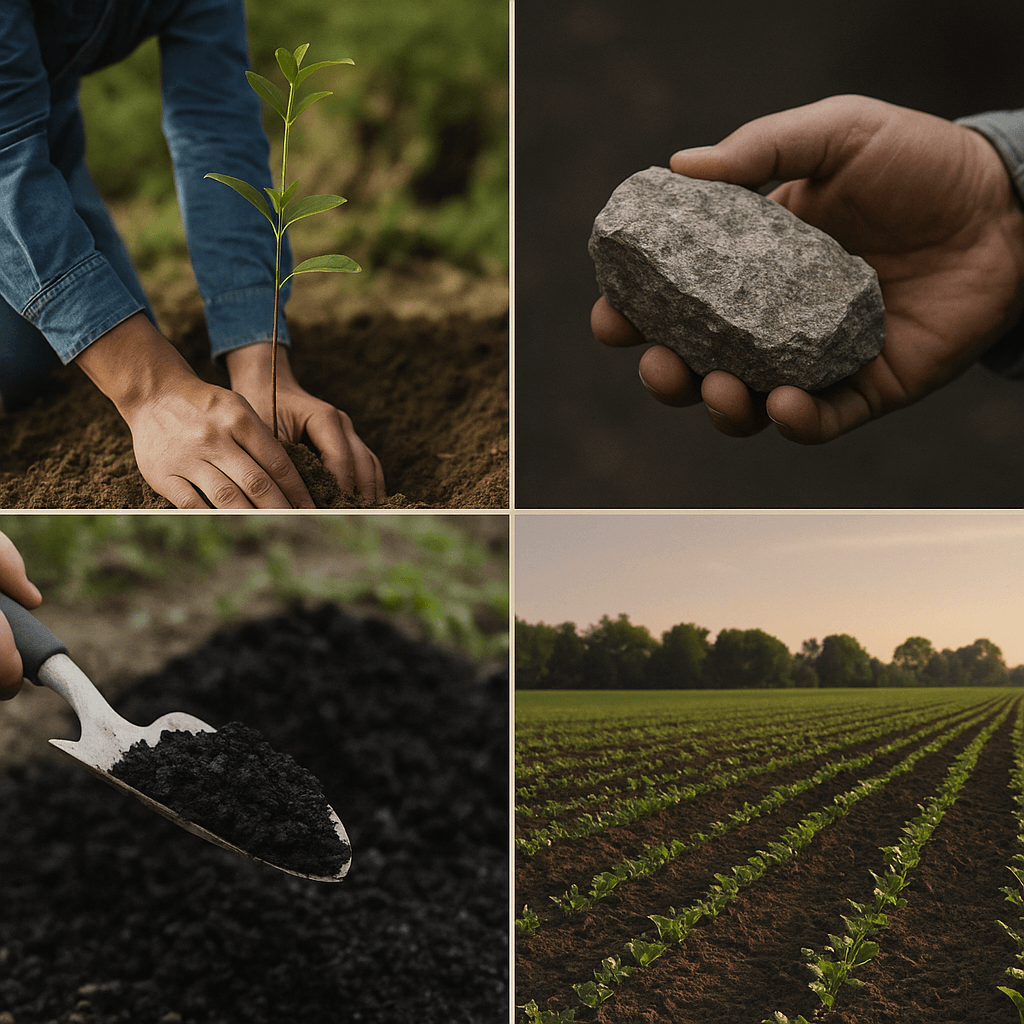🌱 When You Pay to Remove Carbon, What Are You Actually Getting?

🌱 When You Pay to Remove Carbon, What Are You Actually Getting?
Understanding Carbon Offsets: From Fast Fixes to Forever Solutions
You're standing at checkout, your cart loaded, and the option appears: "Offset your carbon footprint for $4?"
You click yes. It feels good.
But have you ever stopped to wonder, "What's actually happening with my money?"
Let's pull back the curtain. Here's how different carbon removal methods stack up—clearly and honestly.
🌳 1. Afforestation (Tree Planting)
Quick, natural, but vulnerable.
Real-life example:
Imagine your flight from London to Paris emits around 100 kg of CO₂. Afforestation could offset that by planting a few trees—fast and inexpensive. But if a wildfire or logging event hits, that CO₂ returns to haunt us.
Price per ton CO₂: $20–$50
Did You Know?
One mature tree absorbs about 21 kg CO₂ per year—you'd need 48 trees growing for a year to offset a single ton.
🌊 2. Blue Carbon (Mangroves, Marshes, Seagrasses)
Rich in biodiversity and lasting protection.
Real-life example:
Ordering seafood? Coastal ecosystems protect fish nurseries, helping maintain your sushi habit sustainably. Mangroves not only trap carbon but also shelter 75% of tropical fish species.
Price per ton CO₂: $40–$70
Did You Know?
Mangroves capture carbon up to 10 times faster than terrestrial forests.
🪨 3. Enhanced Rock Weathering (Carbon-absorbing Minerals)
Super durable, but pricier.
Real-life example:
Buying a new smartphone generates roughly 85 kg CO₂. Enhanced rock weathering can lock this carbon into solid rock—virtually forever. It’s like carbon’s long-term prison sentence.
Price per ton CO₂: $200–$400
Did You Know?
Globally, Earth's rocks naturally absorb about one billion tons of CO₂ annually. Enhanced methods significantly speed this up.
🔥 4. Biochar (Soil Carbon)
Long-lasting and beneficial to soil.
Real-life example:
Your avocado toast breakfast has hidden emissions. The waste from avocado farming could become biochar—locking carbon away and boosting soil fertility simultaneously.
Price per ton CO₂: $150–$250
Did You Know?
Biochar can boost crop yields by up to 15%, creating a virtuous cycle of carbon reduction and better harvests.
🚜 5. Regenerative Agriculture (Healing Soil)
Supports farmers, communities, and climate simultaneously.
Real-life example:
Choosing organic groceries? Regenerative agriculture goes further—actively improving soil to store carbon naturally, enhancing food quality and community livelihoods.
Price per ton CO₂: $40–$70
Did You Know?
Healthy soil managed regeneratively can store 50–100% more carbon compared to conventional farming practices.
🧾 Why Prices Vary So Much
When you offset, you're buying more than carbon removal:
- Permanence:
Short-term (trees) vs. long-term (rocks) carbon removal. - Verification Complexity:
Simple verification (forests) vs. detailed scientific audits (blue carbon, enhanced rock weathering). - Broader Benefits:
Biodiversity, soil health, job creation—each adds value and cost. - Risk & Stability:
Likelihood of reversal (forest fires, farming practices ending).
Simply put:
A $30 tree offset is your good intention planted today.
A $300 rock offset is your promise etched permanently into Earth’s geology.
🌍 Why Does This Matter to You?
You don’t offset just because of numbers. You offset because you care deeply about the world you leave behind.
Understanding these options empowers your choices—knowing exactly what you support, from protecting forests and farmers to locking carbon away permanently.
Because when you offset, you’re not buying guilt-relief—you’re investing in the future you want to see.